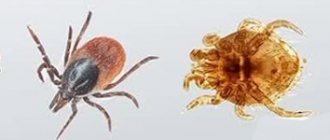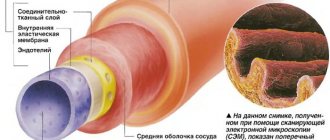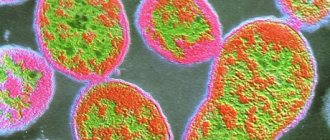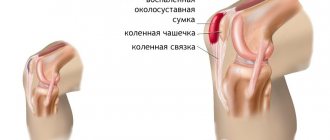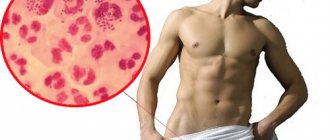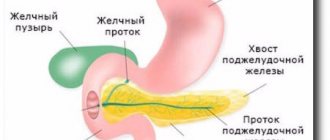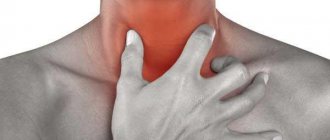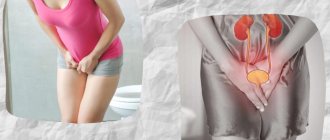Description
Typhoid fever in adults and children
Typhoid fever is an acute cyclic intestinal anthroponotic infection.
It develops after the pathogenic bacterium Salmonella typhi enters the body through nutritional transmission routes. This means that the mode of movement of the infectious agent is from the infected organism to the susceptible immune system. It can get inside through already contaminated water, food or dirty hands. That is why it is important to follow basic personal hygiene rules. After infection, a person feels a feverish state, and the body is subjected to general intoxication. The body gradually develops a typhoid status, roseola rashes appear on the upper layers of the epidermis, as well as specific damage to the lymphatic system in the lower parts of the small intestine.
Features of the bacterium Salmonella typhi
The main causative agent of typhoid fever, Salmonella typhi, is an active gram-negative rod that has slightly rounded ends. It stains well if you use aniline dyes to identify it. After entering the body, the bacterium begins to produce endotoxin, which is considered pathogenic only for humans; the process occurs without the formation of spores.
Salmonella is quite resistant to environmental conditions. It can be found in bodies of water where there is fresh water. The bacterium retains its vital activity for one month if it is in liquid. But if it is placed in a milky environment, the bacteria begin to actively multiply and gradually accumulate.
How can you get typhoid fever?
The mechanism of transmission of typhoid fever occurs through ingestion of contaminated food or water. Patients who experience this disease can transmit the bacteria through water supplies after going to the toilet. The patient's stool contains a huge number of pathogenic microorganisms that are well preserved in water.
Some people have a mild type and degree of typhoid fever, so they are not even aware of its existence. It is also difficult to identify in everyday life. As a result, they remain carriers of very dangerous microorganisms for a long time.
Bacteria tend to multiply in the gallbladder, ducts and liver. A carrier of typhoid fever Salmonella typhi may not have any signs or symptoms, so he is unaware of his illness and poses a danger to healthy people. The pathogens retain their viability well in wastewater.
Types of typhoid fever
Increasingly, people are faced with the following types of typhoid fever:
- Typhus. It belongs to a separate group of infectious diseases, which in most cases develop after rickettsia enters the body. The main carriers of the disease from a sick person to a healthy person are body, head or pubic lice, which can spread lice. There are several varieties of this disease - this is epidemic typhus of the rickettsia species R.mooseri and Rickettsia prowazekii. Mice and lice act as pathogens and carriers of infections.
- Relapsing fever. This term is used to designate pathogenic spirochetes of the disease when lice and ticks act as carriers. In this case, the infectious disease of typhoid fever occurs with alternating symptoms. A person may suddenly feel an attack of fever, after which the body temperature returns to its normal value.
- Typhoid fever (dysentery). This is an infectious disease or intestinal anthroponosis, which begins to develop after salmonella bacteria enter the body. There are several clinical forms of this disease - typical and atypical.
There are also several stages of typhoid fever - mild, moderate and severe. For any manifestations of this disease, you must seek qualified medical help. It is also worth constantly observing the rules of personal hygiene, especially in public places.
In the initial phase of typhoid fever, the patient feels a lack of appetite, severe headaches, weakness, malaise, fever, diarrhea and a state of apathy. If no measures are taken in time, a person may experience a relapse of typhoid fever.
Are there complications with typhoid fever?
If you do not consult a doctor in time, the disease may develop into a more severe form, which will complicate the treatment and recovery of the patient. Several centuries ago, even before the introduction of chloramphenicol into medicine, typhoid fever became the cause of the development of severe asthenia, and led to rapid weight loss and malnutrition. In extremely severe forms of the disease, patients experienced internal intestinal bleeding and perforation of the large intestine.
In the first case, erosion of blood vessels occurs in Peyer's patches, as well as places where there is a high accumulation of mononuclear cells in the intestinal walls. Patients note the appearance of blood streaks in the feces. Heavy bleeding occurs three weeks after the onset of the disease. The main clinical sign to pay attention to is a rapid decrease in blood pressure, blood pressure, and body temperature. These are specific complications of typhoid fever that need to be addressed immediately.
Intestinal perforation implies the development of a pathological process in the lymphoid tissue. Gradually, the infection spreads to the muscular and serous layers of the intestinal walls, resulting in its perforation. Antimicrobial drugs help to cope with clinical manifestations in the shortest possible time, as well as prevent complications.
The typhoid fever bacterium in some cases is localized in any internal organs, where it causes the formation of a local purulent process. These processes cause the development of meningitis, chondritis, periostitis, osteomyelitis, arthritis, and pyelonephritis.
The most common complications include pneumonia, which occurs after a bacterial infection enters the body.
Which doctor should I contact if I suspect typhoid fever?
If a person notices the first symptoms of typhoid fever, he should immediately seek advice from an infectious disease specialist. He will listen carefully to all the patient’s complaints and prescribe a full examination to determine the causative agent of the disease. The specialist will definitely pay attention to the medical history and also determine the epidemiological history. This includes identifying contact with infected patients or traveling to infected areas. Often, the doctor may require additional examination, after which he will prescribe the necessary treatment.
To determine typhoid fever, you will need to take cultures and smears for microflora, perform PCR diagnostics, biochemical analysis and blood markers. It is important to remember that the incubation period of typhoid fever is about two weeks, after which the disease begins to develop in an acute form. It is necessary to identify the disease in time for a quick recovery.
Typhoid fever in children
The transmission routes for typhoid fever are varied, and young children often do not wash their hands well after walking, so salmonella infections can easily enter the intestines. Parents will be able to notice the first symptoms very quickly. The child’s behavior and condition change, he becomes lethargic, physical activity decreases, as does his attitude towards his favorite toys.
The acute form of typhoid fever in children is characterized by the appearance of high temperature, fever, pronounced symptoms of intoxication, as well as the detection of roseola rashes on the skin. Children, unlike adults, are more likely to experience negative consequences, so it is important to promptly contact an experienced infectious disease specialist for qualified help.
Children require mandatory hospitalization, where they will receive complex treatment and a special diet. It is important to maintain careful oral hygiene and take care of your skin to protect yourself from developing stomatitis.
Source of infection
The source of typhoid fever is a person (anthroponotic infection), you can get infected from a patient or a bacteria-excreting person. An infected person releases the bacteria into the environment through urine and feces, and less commonly through saliva or milk.
- Until the seventh day of illness, the infectious agent is released in small quantities.
- Massive release of bacteria begins at the end of the first week,
- and reaches its maximum at the height of clinical manifestations.
- Bacterial excretion lasts no more than three months, but in 3–5% it becomes chronic either with feces (more often) or with urine (the most dangerous in epidemiological terms).
How is it transmitted?
The transmission mechanism of the abdominal type is fecal-oral. A person can become infected (transmission routes) through:
- consumption of infected food, water
- or by contact and household means.
Outbreaks and epidemics of typhoid fever are caused by the use of water from a polluted reservoir.
Typhoid fever is a fairly contagious infection; it affects people aged 15 to 40 years, but infants also have a risk of becoming infected from their mother through breast milk.
Seasonality
Typhoid fever is a seasonal infection; the maximum number of cases is registered in the summer-autumn period, which is associated with:
- activation of transmission routes (water, food);
- optimal conditions in the environment where the pathogen is perfectly preserved and reproduces;
- seasonal changes in the human body (decreased reactivity under the influence of ultraviolet radiation, decreased acidity of gastric contents, high consumption of plant fiber, which leads to alkalization of the gastrointestinal mucosa and its irritation).
After an illness, stable and often lifelong immunity is formed. But due to the widespread use of antibiotics to treat patients with typhoid fever, which suppress the immune system, acquired immunity has become less intense and longer lasting. Therefore, the frequency of re-infection with this infection has increased.
Symptoms
Photo: 2health.ru
Symptoms of typhoid fever depend on the clinical form and severity of the disease. There are typical and atypical (abortive, erased) forms, different types of disease course: recurrent, cyclical. Signs of typhoid fever change as the disease progresses:
- Incubation period. Characterized by general weakness, nausea, and a feeling of weakness. May last from three days to three weeks.
- Temperature increase. The temperature rises gradually and can reach 40 degrees a week after the first symptoms of the disease appear in children.
- Rash on the stomach and chest. The rash of typhoid fever is not bright, round, and has clear contours. Appears after two weeks of illness.
- Intoxication of the body. The patient develops dizziness, weakness, delirium, and sweating.
- Damage to the small intestine and lymph nodes. For typhoid fever, the doctor pays attention to Padalka's syndrome. When tapping the abdominal wall, the specialist may notice that the sound changes in the lower right section. Pain appears in the lower abdomen.
- Damage to the liver, spleen. The liver enlarges, and the person begins to develop jaundice.
If treatment is not carried out, intestinal bleeding may develop with typhoid fever. The disease is dangerous due to its complications: peritonitis, meningitis, cholecystitis and other consequences.
Initial stage of the disease
In adults, symptoms of typhoid fever begin to appear during the incubation period. Patients report malaise, weakness, loss of appetite, headaches and muscle pain. The temperature stays between 37.5-38.5 degrees, rising in the evening.
Peak of the disease
The patient's condition is deteriorating rapidly; with typhoid fever, the temperature can reach 39.5-40 degrees. Patients complain of a number of unpleasant symptoms:
- insomnia, lack of appetite;
- thirst, dry mouth, bitterness on the tongue;
- increased heart rate;
- sweating;
- pain in muscles and joints;
- abdominal pain, bloating;
- lethargy, loss of consciousness.
The timing of the appearance of a rash with typhoid fever ranges from one week to two. The rashes are pinkish, with clear contours, most often in the lower chest, on the sides, and in the upper abdomen. The elements of the rash do not cause any discomfort to the patient. The spots disappear after 3-5 days, new elements may be added, the skin remains slightly pigmented for a short period of time.
During the acute period of the disease, the spleen and liver enlarge. The patient's face becomes pale and puffy. With typhoid fever, unstable stools are noted. Constipation alternates with diarrhea. If a complication develops, bleeding in the intestines and bloody diarrhea appear.
In severe cases of the disease, specialists diagnose patients with “typhoid status,” which is accompanied by the following symptoms:
- loss of consciousness;
- lethargy;
- the patient confuses day and night;
- hallucinations;
- rave;
- trembling in the limbs;
- muscle spasms and cramps.
Reasons for the development of complications: lack of treatment, severe manifestations of the disease.
Fading of symptoms
The acute period of the disease can last about two to three weeks, then the manifestations of typhus begin to gradually fade away. The temperature gradually decreases to normal, stool returns to normal, and symptoms of intoxication disappear. The patient's tongue is cleared of plaque and appetite appears. It is recommended that patients get up only 7-10 days after the temperature has returned to normal.
Complications
If a patient with typhoid fever is not provided with timely medical care, complications may develop with a significant decrease in immunity.
- Intestinal bleeding.
- Perforation of the wall of the small intestine - occurs in case of excessive development of salmonella.
- Meningoencephalitis. The nervous system and brain are affected.
- Peritonitis. The peritoneal mucosa becomes inflamed.
- Kidney failure.
- Typhoid psychosis. Characterized by a disorder of the patient's nervous system.
- Pneumonia. Occurs due to lack of movement of a patient with a high temperature.
- Cholecystitis. Damage to the biliary tract.
- Myocarditis. Disruption of the heart muscle.
- Osteomyelitis. Damage to bone tissue and joints.
- Damage to the urinary tract.
- Death.
After recovery, the causative agent of typhoid fever can live for a long time in the bile ducts and duodenum of a person. Therefore, often a patient who feels absolutely healthy is dangerous to others and can infect healthy family members. Salmonella bacteria can be shed in your stool for more than a year.
Prevention and adherence to hygiene rules will help to eliminate typhoid fever: washing hands after each visit to the toilet, exterminating flies in the premises. If a person’s work involves contact with patients with typhoid fever, it is advisable to get vaccinated.
During pregnancy
During pregnancy, you should not use the antibiotics that are usually prescribed to treat typhus. In such a situation, the expectant mother is usually prescribed third generation cephalosporins and Ampicillin or Amoxicillin . However, it is best to take care of preventive measures before pregnancy and adhere to the rules of prevention while carrying a baby. If typhus is not treated, the risk of miscarriage and fetal loss rapidly increases. The baby may also be born premature or at too low a weight.
Diagnostics
Photo: lebzdrav.ru
The main causative agent of the disease is Salmonella. The bacterium enters the human body through the mouth. The microbe then passes through the large intestine and lymph nodes. It is at this stage that bacteria multiply and enter the circulatory system. In this regard, intoxication syndrome develops.
Diagnosis of typhoid fever. External signs
External indicators are very important when identifying typhoid fever. At the initial stage (duration of the disease is 3-5 days), the patient’s body temperature will reach the highest levels. The face is swollen, the skin is dry, bluish, and roseola-shaped pimples may appear in the chest area.
The patient's tongue is swollen and dry, covered at the base with a blue-gray film, and tooth marks may be found along the edges. The abdomen is swollen, there is rumbling and pain. Testing for typhoid fever in the first 2 days shows a normal white blood cell count. At the last stage of the disease, lymphocytosis, leukopenia, a significant increase in ESR and neutropenia are detected.
Diagnosis using laboratory tests
The most reliable method for detecting the disease is to determine the amount of Salmonella blood culture isolated. Early diagnosis allows one to obtain positive results throughout the entire period of the patient's febrile state.
A typhoid fever test should be performed daily for 3 days. It is recommended to carry out examination on the 1st day before taking antimicrobial drugs. Blood for typhoid fever is taken from the patient in the amount of 5-10 ml per 100 ml of bile-containing medium. For diagnostic purposes, tests are carried out until the patient’s temperature returns to normal. Pus, sputum, exudate fluid, and feces are also subject to examination. They are usually taken for analysis in the 2nd or 3rd week from the onset of the disease. Studies can be repeated if necessary every 5-7 days.
It is worth saying that the bacterial bacillus that caused the disease can be found in the urine and feces not only of a patient with typhoid fever, but also of bacteria carriers during any febrile conditions.
Serological testing for typhoid fever is also of great importance in diagnosis. Research is carried out 7-10 days from the onset of the disease. Serodiagnosis of typhoid fever is aimed at identifying the accumulation of O-antibody titers.
Thus, a positive response with type Vi antigen indicates prolonged carriage of the pathogen. A positive reaction to typhoid fever with the H-antigen indicates that the patient had suffered the disease previously or had been vaccinated. Recently, the disease is increasingly diagnosed using ELISA.
Testing for typhoid fever is carried out by taking stool and bile samples. In this case, diagnosis is aimed at identifying typhoparatyphoid carriage.
Remember: only a doctor should make a diagnosis, since many signs of the abdominal type correspond to symptoms of other diseases. Self-diagnosis (and especially treatment) can lead to irreversible consequences.
Specific prevention of the abdominal type consists of mandatory vaccination enriched with the Vi antigen. Vaccination is carried out for adults and children under 7 years of age. Mandatory and graded vaccination against typhoid fever is carried out for children under 15 years of age and adults.
As for nonspecific prevention, in this case general sanitary measures should be carried out aimed at combating flies (frequent carriers of bacteria), improving the quality of water supply and sanitary cleaning of populated areas, etc.
Classification
The abdominal type is classified according to the following criteria:
Character of the current:
- typical;
- atypical (can occur in erased, abortive (shortened) or outpatient forms);
- rare variants (pneumotyphoid - lung damage, meningotyphoid - brain damage, nephrotyphoid - kidneys, colotyphoid - large intestine and typhoid gastroenteritis).
Duration of flow:
- spicy;
- with exacerbations (recurrent).
Severity:
- light;
- medium-heavy;
- heavy.
Presence/absence of complications:
- uncomplicated option;
- complicated: specific (intestinal bleeding or perforation, infectious-toxic shock);
- nonspecific (inflammation of the lungs, salivary glands, gallbladder and others).
Treatment
Photo: cbroadcasting.net
All patients are treated in a hospital setting. Hospitalization is required for the following reasons:
- the disease is infectious;
- there is a risk of infecting others;
- Availability of quality care is the most important factor for a complete and successful recovery.
At the first suspicion of typhus, etiotropic treatment is prescribed, aimed at eliminating the pathogen.
Use of antibiotics and pathogenetic agents
Salmonella bacteria are eliminated by ceftriaxone or ciprofloxacin (these antibiotic drugs are prescribed for infectious and inflammatory diseases). Treatment of typhoid fever with antibiotics helps lower the temperature and reduce intoxication. In some cases, an allergic reaction is observed: skin rashes, irritation, stomatitis. Drug intolerance may be accompanied by prolonged vomiting, as a result of which the prescription of antibiotics is canceled.
Pathogenetic therapy involves detoxification, which involves the administration of drugs orally or intravenously: hemodez, glucose, vitamin complexes, etc.
Diet
The method of treating the disease includes following a therapeutic diet. Therapeutic nutrition has a gentle effect on the intestines and does not cause fermentation (putrefactive) processes after consumption. For food to be easily digestible, it must be semi-liquid (kefir, liquid cottage cheese, broths, soups) or rubbed through a sieve. The therapeutic diet for typhoid fever is low-calorie; the patient should eat three times a day in small portions. Medical experts recommend drinking plenty of liquid with your servings.
Patient care
In addition to the above measures, the patient is prescribed bed rest for an average of 10 days. The prescription must be strictly followed, otherwise straining the abdominal muscles may lead to bleeding or perforation of the intestine. It is necessary to observe hygienic conditions, both in patient care and in nutrition.
Treatment with folk remedies
The purpose of using traditional medicine for this disease is to reduce the signs and symptoms of the disease and assist in recovery. The following recipes are known, the use of which must be agreed with a doctor.
- Young willow bark will help fight the signs of typhoid fever. It has anti-inflammatory and disinfectant properties. Brew two tablespoons of willow bark in boiling water. It is necessary to insist for two hours. Drink the infusion three to five times a day.
- To eliminate fever, traditional healers advise washing the patient. Start the process with the face and neck, and immediately wipe with a dry towel. The wet towel should be in a basin of water, the temperature of which does not exceed +27 degrees. Then they wash their hands, chest, stomach, legs.
- Valerian preparations are considered very useful and effective due to their antibacterial and choleretic properties.
Treatment of typhoid fever in children
Children and adolescents with this disease are also subject to mandatory hospitalization in an infectious diseases hospital. As a rule, children are isolated in separate boxes in order to prevent an outbreak and spread of infection.
During the period of fever, an infectious disease doctor prescribes bed rest and careful care of the skin and oral cavity. A special diet with the necessary nutrients, vitamins, and microelements is prescribed. Spicy foods are removed from the diet.
The doctor prescribes antibiotics in the usual dosage. If, during long-term treatment, sluggish repair is observed and the child becomes weaker, a blood transfusion is performed.
Preventive measures for typhoid fever
According to epidemiological indications, vaccination of the population is carried out by subcutaneous injection of a liquid anti-typhoid drug into the shoulder. The World Health Organization recommends three types of vaccines. Each of them has its own characteristics, a certain adaptation period of the body and dosage.
Vaccination against typhoid fever is recommended for those traveling abroad, to the countries of Latin America, Africa, and Asia. Doctors recommend vaccination against typhoid fever a week before travel. The average duration of vaccination is 3 years. It is important to consult with your doctor about the age of the last vaccination and the relevance of the new one.
Prevention of typhoid fever
- Universal compliance with sanitary and hygienic rules (from personal hygiene to water supply).
- Wash your hands often with warm water and soap.
- Get the appropriate vaccination.
- In areas with poor sanitation, doctors recommend consuming only bottled water.
- Consult a doctor immediately if the first signs of the disease are detected.
Prevention of the disease also includes: supplying the population with high-quality water, timely removal of garbage and sewage from populated areas, and control of insects.
Repeated illness is an extremely rare occurrence; typhoid fever usually leaves lasting immunity.
The treatment method for typhoid fever includes:
- use of antibiotics and pathogenetic agents;
- diet;
- patient care;
- treatment with folk remedies.
It is also necessary to pay attention to the treatment of the disease in children, measures to prevent the disease and prevention.
All treatment procedures to combat typhoid fever are aimed at neutralizing the infection, increasing the body's immunity and stopping the transmission of the infectious disease.
The disease is diagnosed and treated by infectious disease doctors.
Question answer
When is discharge from the hospital after treatment for typhoid fever?
The timing of discharge depends on the severity of the disease, temperature readings and negative results. examination of feces and urine (carried out twice) and duodenal contents (once). A patient who has recovered from the disease is discharged no earlier than 21–23 days. A patient with a mild course of the disease spends an average of 25 days in the hospital, with a moderate course up to 30 days, and with a severe course up to 45 days.
Can you die from typhoid fever?
In the pre-antibiotic era, the death rate from typhoid fever ranged from 3 to 20%. In recent years, the mortality rate has decreased and is in the range of 0.2 – 0.3%. The possibility of an unfavorable prognosis still exists even with a mild course of the disease due to the possible occurrence of severe complications (intestinal bleeding or intestinal perforation).
What is the treatment for bacteria excretion?
Treatment for bacterial excretion has not been developed to date. It is important to treat concomitant diseases. In some cases, it is possible to stop the release of typhoid bacteria by taking ampicillin, immunostimulants and introducing a specific monovaccine.
Medicines
Photo: farmacistiallavoro.it
A patient with suspected abdominal type is subject to immediate hospitalization in the infectious diseases department. But how and with what to treat typhoid fever? Treatment should be comprehensive and include fighting infection and measures against dehydration, especially with intestinal bleeding.
Antimicrobial drugs that combat typhoid fever are sulfonamides and antibiotics. The active ingredient of a large number of sulfonamide antibacterial drugs is trimethoprim. Co-trimoxazole is prescribed orally, 2-3 tablets per day, for five to fourteen days. Contraindications include breastfeeding and intolerance to trimethoprim. Analogues of Co-trimoxazole are drugs such as Biseptol, Bactrim, Sulfatone.
In medical reference books, the antibiotic chloramphenicol is recommended as an antimicrobial drug in the treatment of typhoid fever. It is taken half an hour before meals (up to four times a day for one to two weeks). Contraindication is intolerance to chloramphenicol. Over time, races of salmonella resistant to chloramphenicol have appeared; in addition, chloramphenicol itself destroys not only pathogenic bacteria, but also beneficial microbes, causing diarrhea (diarrhea).
Among the antibiotics of the penicillin group, Amoxicillin is used in the treatment of typhoid fever. The tablets are taken three times a day. The duration of treatment is prescribed by the doctor; as a rule, treatment with amoxicillin lasts from five to twelve days. Contraindications are intolerance to penicillin and breastfeeding.
Among the new generation of antibiotics, Salmonella are sensitive to cephalosporins: ciprofloxacin, azithromycin, ceftriaxone.
Ciprofloxacin tablets are taken on an empty stomach twice a day for ten days. Contraindications include hypersensitivity, pregnancy and lactation.
Azithromycin (Azitrox) is available in the form of tablets and capsules. Taken between meals: one hour before and two hours after. It is convenient because it is taken once a day, and the course of taking this medicine is only three days. Since azithromycin and ciprofloxacin belong to the same group of antibiotics, the contraindications for their use are similar.
It is known that with complicated typhoid fever, the lungs, intestines and abdominal organs, liver, kidneys, meninges and other organs are affected. Ceftriaxone will cope with both salmonella and secondary microflora. One of the symptoms of typhoid fever is vomiting, which can make taking medications in pill form useless. An important advantage of ceftriaxone is its injection form of administration.
Medicines that combat typhoid fever are not limited to antibiotics. Depending on the severity of the disease, intravenous injections of glucose-saline solutions are prescribed to remove toxins from the blood. To bind poisons in the intestines, sorbents are needed that act like activated carbon.
And to develop beneficial microflora that can fight salmonella in the intestines, probiotics and prebiotics are used. If the course of typhoid fever is complicated by bleeding, then hemostatic drugs such as aminocaproic acid and vikasol are used.
General information
The word “typhoid” comes from the Greek language and is translated as “fog”, “stupidity”. This is what was once called a group of infectious diseases in which patients suffer from high fever , intoxication and mental disorders.
The disease typhus is divided into several types - typhoid , typhoid and relapsing . These are different diseases, but for a long time, until about the beginning of the nineteenth century, they were considered one disease. One disease was considered to be those conditions that were accompanied by fever and clouding of consciousness. According to Wikipedia, the disease was called “rotten fever” and “nervous fever.” Later, in 1829, typhoid fever was identified as a separate group, and in 1843, relapsing fever was identified.
At different times, typhus epidemics occurred against the backdrop of social disasters - war, famine, devastation. During such epidemics, people died in the thousands.
Modern doctors know everything about the types of typhus, thanks to which they successfully cure all types of this disease. How they differ and how to treat each type of typhus will be discussed in this article.
Forecast
With typhoid fever, the mortality rate is 0.1-0.3%. However, it is important to consider that even with a mild form of the disease, quite serious complications can develop. In this case, the prognosis may be unfavorable.
With typhus, the prognosis is favorable, even if the disease is severe.
With relapsing typhus, high mortality is observed in epidemics among weakened people and in the absence of medical care. In most countries, deaths are rare.
Lousy farm
The parasites were fed with their blood by world-famous mathematicians Stefan Banach and Wladyslaw Orlicz, geomorphologist Alfred Jahn, university rector botanist Severin Krzeminewski, conductor Stanislav Skrowaczewski and - the loudest name - still a young man, and in the future one of the most beloved poets by Poles, Zbigniew Herbert. He was an Akovets (member of the underground Home Army) and supplied vaccines to the partisans
The SS men sensed that all was not well at the “lousy company.” In 1942, Himmler's personal emissary offered Weigl, as an ethnic German, a German passport and a move to Berlin. He promised an institute, a department and a Nobel Prize after the war - they say that the German government has great connections in Sweden. In return - nothing at all: “close this Polish shop.” The conversation turned to elevated tones. The SS man unfastened his holster and shouted: “We know how to persuade!” Weigl answered: “Do you know how?... I’ve already lived my life, and it’s better to die from a bullet than to die day after day as a scoundrel. You can only do me a favor”... And he left, leaving the guest alone.
Consequences and complications
It is important to understand that typhoid fever in adults and children, like other types of typhus, can lead to complications.
In both adults and children, complications of typhoid fever may include:
- peritonitis;
- intestinal bleeding;
- perforation of the intestinal wall;
- secondary infections.
As complications of typhus, vascular disorders can develop, provoking the development of thromboembolism , thrombophlebitis , thrombosis , and collapse .
Relapsing fever can be complicated by meningitis , uveitis , iridocyclitis , synovitis , and splenic rupture.
How does infection occur?
The lice bite itself does not lead to infection. It occurs at the moment of scratching the skin, when the secretions left by lice are rubbed into the body. Typhoid is a disease with an incubation period of up to two weeks. Laboratory tests become positive only 7 days after infection.
The disease begins with chills, fever, severe headache and back pain. After a few days, a pink, spotted rash appears in the abdomen. The patient's consciousness begins to fog, speech becomes incoherent and hasty. Some people even sometimes fall into a coma. The temperature constantly remains at 40 degrees and drops sharply after 14 days. When typhoid epidemics occur, almost 50% of patients die.
Epidemic in Tunisia
In 1909, typhus struck the French colony of Tunisia. Mechnikov's colleague at the Pasteur Institute, Charles Nicole, inspected the hospital for the natives. The queues at the emergency room were huge and lasted for days. The floor and yard were littered with the bodies of the sick and dying. In these queues people became infected with typhus. The reception staff also became ill, but typhus did not spread in the wards. Nicole noticed that the "typhus" was harmless once he was washed, shaved and changed into hospital pajamas. The clothes seized from the patients were examined and only one type of parasite was found on them - body louse. Then Nicole injected the blood of "typhus" into the macaque. She became ill, and the lice that bit her infected other isolated macaques. For this experience, Nicol received the 1928 Nobel Prize. He was lucky to live to see her.
Less fortunate was the American Howard Ricketts, who in 1910 proved that typhus-like diseases were caused by previously unknown intracellular parasites - and immediately fell victim to them. But he managed to notice an important property of rash pathogens: they are not cultivated outside a living organism (this greatly complicates the production of a vaccine; only 30 years later in Perm, Alexey Pshenichnov learned to cultivate rickettsia).
Pathological anatomy of typhoid fever
Rice. 6 and 7. “Cerebral swelling” of Peyer’s patches and grouped follicles, caused by granulomatous proliferation of macrophages and monocytes. The affected areas have a grooved appearance.
Rice. 8. In the second week of the disease, necrosis of lymphoid formations develops, in some cases affecting the entire thickness of the intestine.
Rice. 9 and 10. In the third week of the disease, necrotic elements are rejected and ulcers form. The edges of such ulcers resemble craters, the edges of which hang over the areas of defects. The ulcers are filled with detritus and exudate, which is why they are called “dirty ulcers.”
Rice. 11. Stage of cleansing ulcers (“clean ulcers”). The defects are shallow, the edges are low, and there are no necrotic masses. During the healing period, a layer of granulation tissue forms at the bottom of the ulcers, and regenerating epithelium grows from the edges of the ulcer.
Rice. 12. A thin layer of serous membrane prevents intestinal contents from penetrating into the abdominal cavity. During this period, there is a danger of perforation (perforation) of the intestine, followed by bleeding and the development of peritonitis.
Diet
Diet Table No. 4
- Efficacy: therapeutic effect after 7-10 days
- Time frame: 21 days
- Cost of products: 1120-1150 rubles. in Week
Diet No. 4b
- Efficacy: therapeutic effect after 10 days
- Duration: 2 weeks - 1 month
- Cost of products: 1300-1400 rubles per week
Diet No. 4c
- Efficacy: therapeutic effect after 7 days
- Timing: constantly
- Cost of products: 1300-1400 rubles per week
Diet therapy is very important in the treatment of typhoid fever. Since in the process of intestinal damage, ulcers form, which scar approximately in the fourth week of illness, it is important to provide the patient with nutrition that is gentle on the mucous membrane.
In the first days of the disease, the patient adheres to diet Table No. 4 . Diet No. 46 is prescribed . Later, the patient can switch to Diet No. 4c .
While following the Table No. 4 , you should definitely consume jelly and compote.
While following the diet Table No. 46, it is important to include the following foods and dishes in the menu:
- Yesterday bread, dry biscuits.
- Soups on a weak low-fat broth with the addition of cereals and vegetables.
- Boiled meat and low-fat fish.
- Vegetable purees, boiled vegetables. It is necessary to exclude cabbage, turnips, sorrel, radishes, spinach, and onions.
- Porridge, vermicelli.
- Steamed omelette, soft-boiled eggs.
- Kissel, jelly, mousses, baked fruits.
- Dairy products.

